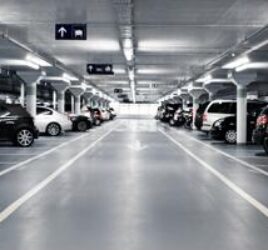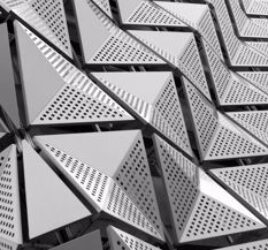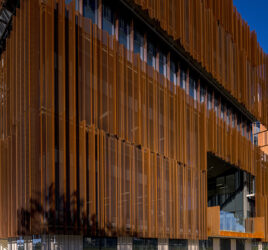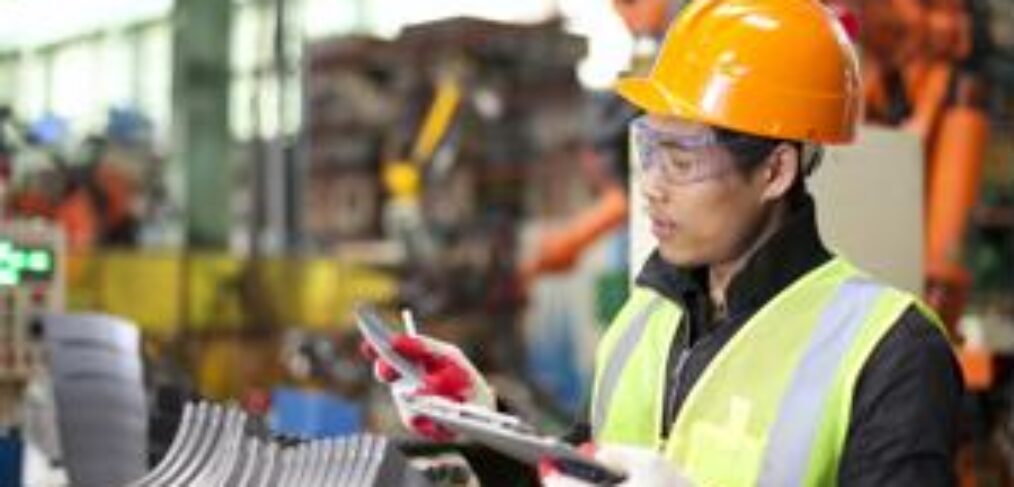
Design something new with rectangular perforated metal
Creating a unique design that is both efficient and appealing to your audience is a distinctive challenge that can inspire creativity and sometimes influence a shift in the design world. Architecture is more than building models in AutoCAD, it can motivate your clients or decision-makers to think outside the box.
Rectangular shapes may not be the most popular hole type but we'll divulge the ways in which it could be the solution to your design rut.
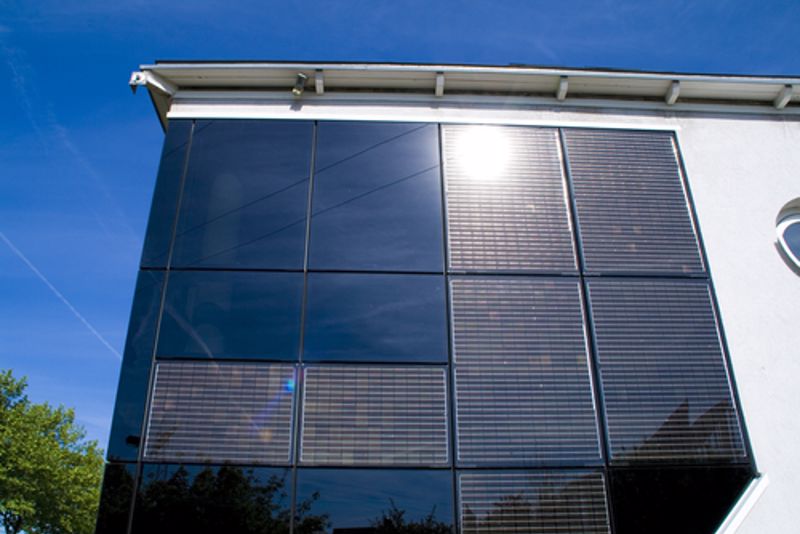
Perforated sheet uses and types
Perforated metal is versatile in both use and style.
When you think rectangular metal, grating, sieves or animal care might come to mind. It is a great way to have some drainage while providing a reliable and safe surface to walk on. You can find grating used for this purpose on farms, in industrial areas and for drainage.
In the construction industry, this metal type is often used for sound absorption. Managing sound can include strategically placed perforated metal that deflects vibrations and creates a more noise-aware space. You can find this technique in schools and more recently in our project with the Taronga Institute of Science & Learning.
The architectural side of this designed metal can bring to life a new type of facade texture. Design hasn't always taken a front seat in industrial architecture, but using rectangular perforated metal can lead to functional and aesthetically pleasing results. You can customise the size and shape of the hole pattern to accommodate different needs and uses.
From a design standpoint, perforated metal mesh can be used to add subtle elements to a building side, shade or partitions. It provides clear boundaries for space without closing it off from airflow or traffic. It's an excellent choice for an outdoor space because, depending on the metal you choose, it will only require minimal maintenance and is not a great conductor of electricity.
Metal types
At Locker, we use two types of metal for a perforated plate: aluminium and steel. While both are great metal type options, they have their own specific advantages for certain project types.
Metal corrosion
Corrosion is a top concern for most construction involving outdoor metal. Both aluminium and stainless steel are resistant to corrosion, but perforated steel must be painted or coated to be more resistant, where aluminium is naturally corrosion resistant.
Strength and malleability
Steel is a strong and reliable material, however, aluminium is more malleable. In terms of designing the metal into shapes outside of a typical panel, aluminium might be a better choice. If your design only asks for traditional, strong perforated metal sheets, steel is a resilient option.
How it's made
Perforated metal originated with hand-punched holes. While Locker professionals still keep a close eye on the process itself and quality check each product before being presented to the client, machine perforation is standard practice today. This allows for more precise results and reliable panel designs.
Locker technology allows for precise machine punches that align perfectly with your desired hole shape, length and width. You can choose pre-made designs like rectangular shapes, but you still have the creative freedom to create any design you need.
There are a few ways to create perforated holes. Perforating is the punching of metals or other malleable materials, creating varying shaped holes with a punch and die using a mechanical or hydraulic perforating press. The punch and die are shaped to produce the desired shaped hole.
You can dive deeper into this process in our blog dedicated to the subject.
The future of perforated metal
Opting for a rectangular pattern is a unique way to add textural designs across the surface below or adjacent to the panel. Ornamenting your outdoor space doesn't have to create major costs in terms of maintenance and expensive outdoor material. Across the world, architects are leaning into the possibilities of perforated metal.
The benefits of utilising this type of decorative metal are endless, it just takes more creativity to see the possibilities and imagine boldly.
There are more patterns than rectangular and the typical circular. Try diamond, triangular, faded or something truly your own. The aim is to coordinate the story of the building inside and apply this metal to match. Choose a unique design or paint the metal to add dimension and character to any space.
The industrial benefits of rectangular perforated metal span from farming to the food and beverage industry.
There is no limit to how using perforated metal can benefit your business in big and small applications. Contact Locker to discuss possibilities and how we can shine through as your partner in personalised perforated metal projects.

